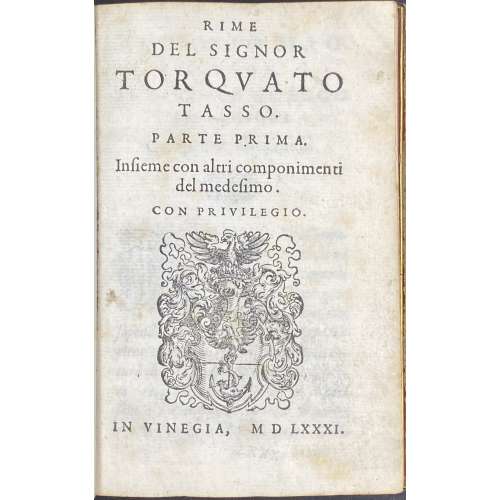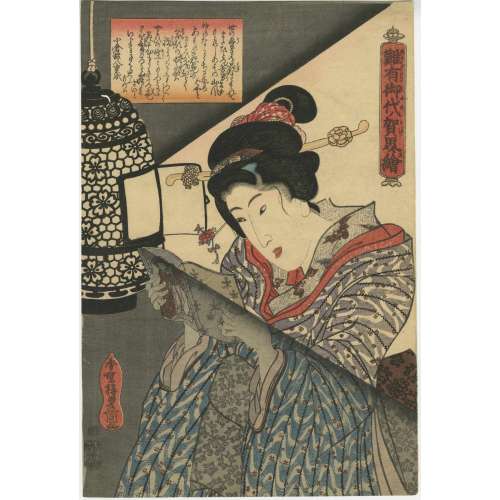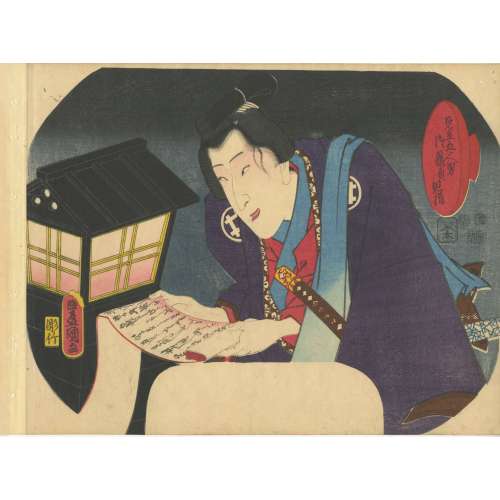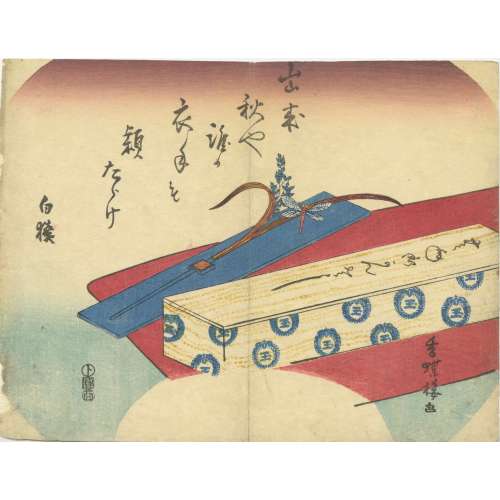Engraved title with the portrait of Torquato Tasso, displayed in an oval medallion, bound in “TORQUATO TASSO”, between two naked putti; Architecture with two columns and Ionic capitals supporting an architectural pediment; between the columns is a table with the inscription: LA GIERVSALEMME | LIBERATA | DI TORQVATO TASSO | Con le Figure di Bernardo | CASTELLO; | E le Annotazioni di Scipio | GENTILI, e di Giulio | GVASTAVINI. | IN GENOVA. M.D.LXXXX .||
Contents: The 20 cantos are followed by: Tutte le stanza intere, che dall'autore sono state refiutate in questo libro; Annotationi di Scipio Gentili; Luoghi osservati dal mag. Giulio Guastavini, quali il Tasso nella sua Gierusalemme hà presi & imitati da poeti & altri scrittori antichi; Allegoria del poema; Tavola di tutti i nomi proprii et di tutte le materie principali contenute nel presente libro.
Pagination: [2] engraved t.p. / blank, 3-11, [1] 2-255 [256], 1-71 [72] [1] 2-40, 4 unpag. leaves ‘Allegoria del poema’; total 387 pp.
Collation: 8vo; π
6 A-Q
8 A-D
8 E
4 A-B
8 χ
4 (in the first quire M
4 marked L
4), ills. signed in collation. At p. 17 canto 3rd marked as 2nd, pp. 135 and 139 in 12th canto marked as 11th.
Binding: later full polished calf, blind double-ruled covers, blind double-ruled raised bands, gilt lettering: GIERVSALEMME | LIBERATA and GENOVA | 1590. TMG. Printed on laid paper. Front joints split at head and tail.
Title page and twenty full-page ill. facing the opening of each canto, engraved by Agostino Carracci and Giacomo Franco after Castello. Those for cantos 6-8, 10, 12, 16-17, 19-20 are by Carracci, 8 and 19 with his initials. The remainder are by Franco and are signed by him. Woodcut head and tailpieces, the Argomenti at the head of each canto within cartouches, initials.
Catalogue raisonné: Adam Bartsch. Le peintre graveur. — Vienne: J. V. Degen, 1803.
Author: Written by Torquato Tasso (Italian, Sorrento 1544–1595 Rome)
Designer: Illustrations designed by Bernardo Castello (Italian, Genoa (?) 1557–1629 Genoa)
Engraver: Illustrations engraved by Agostino Carracci (Italian, Bologna 1557–1602 Parma)
Engraver: Illustrations engraved by Giacomo Franco (Italian, Venice 1550–1620 Venice)
Publisher: Published by Girolamo Bartoli , Genoa
Ref.:
MET,
HathiTrust,















 SVJP-0197.2015: Three Pleasures of Present-day Osaka (Tôsei Naniwa no sankô);
SVJP-0197.2015: Three Pleasures of Present-day Osaka (Tôsei Naniwa no sankô); 












 A lookalike triptych by Kunisada can be found in
A lookalike triptych by Kunisada can be found in  Data from
Data from 


